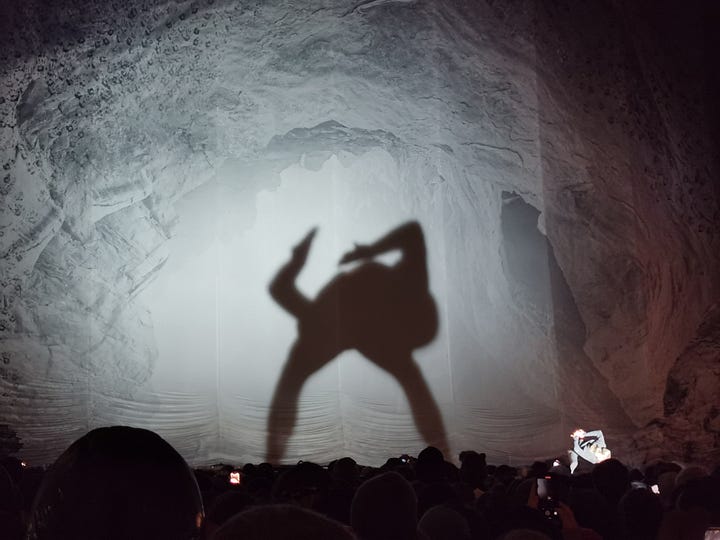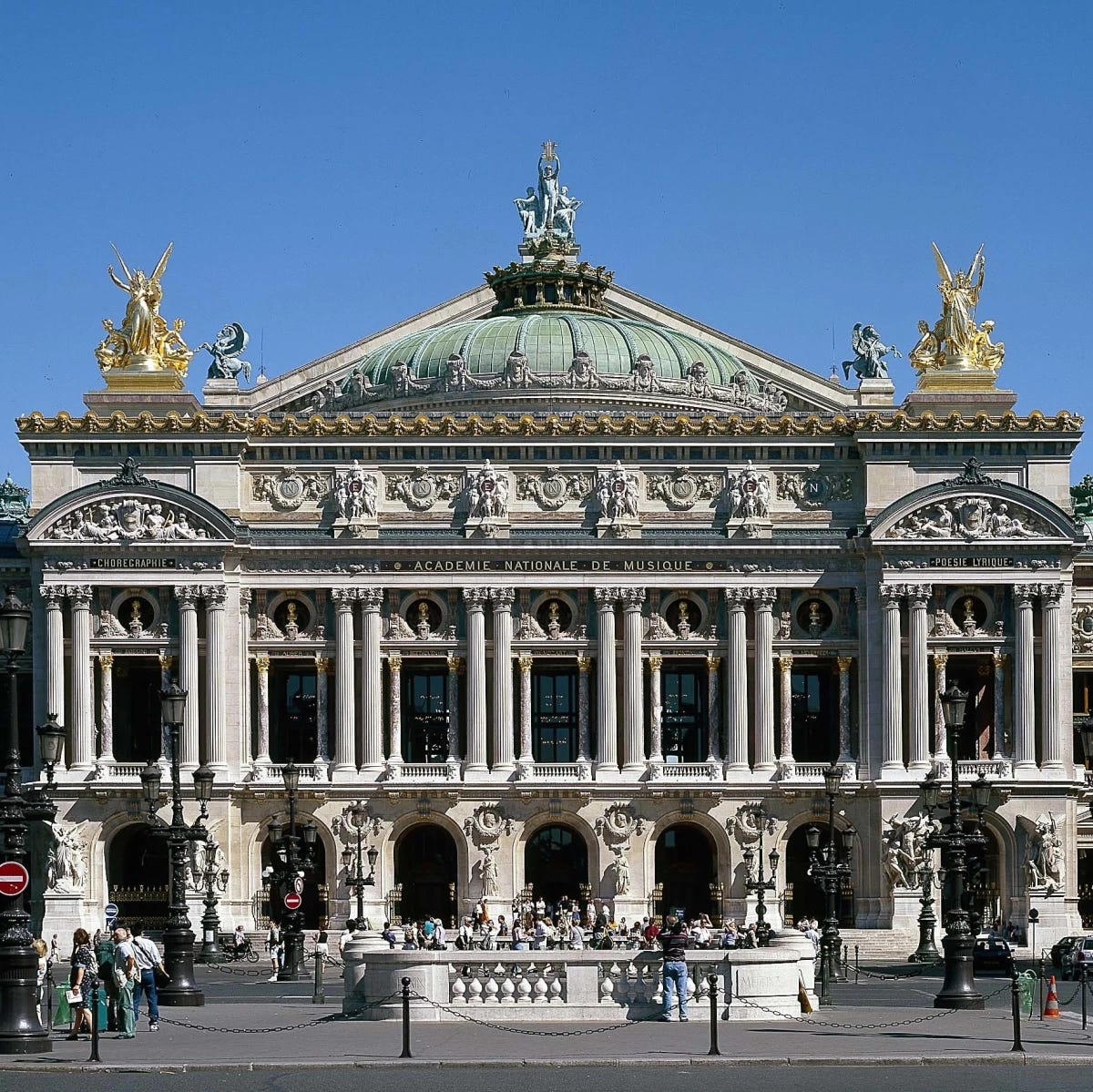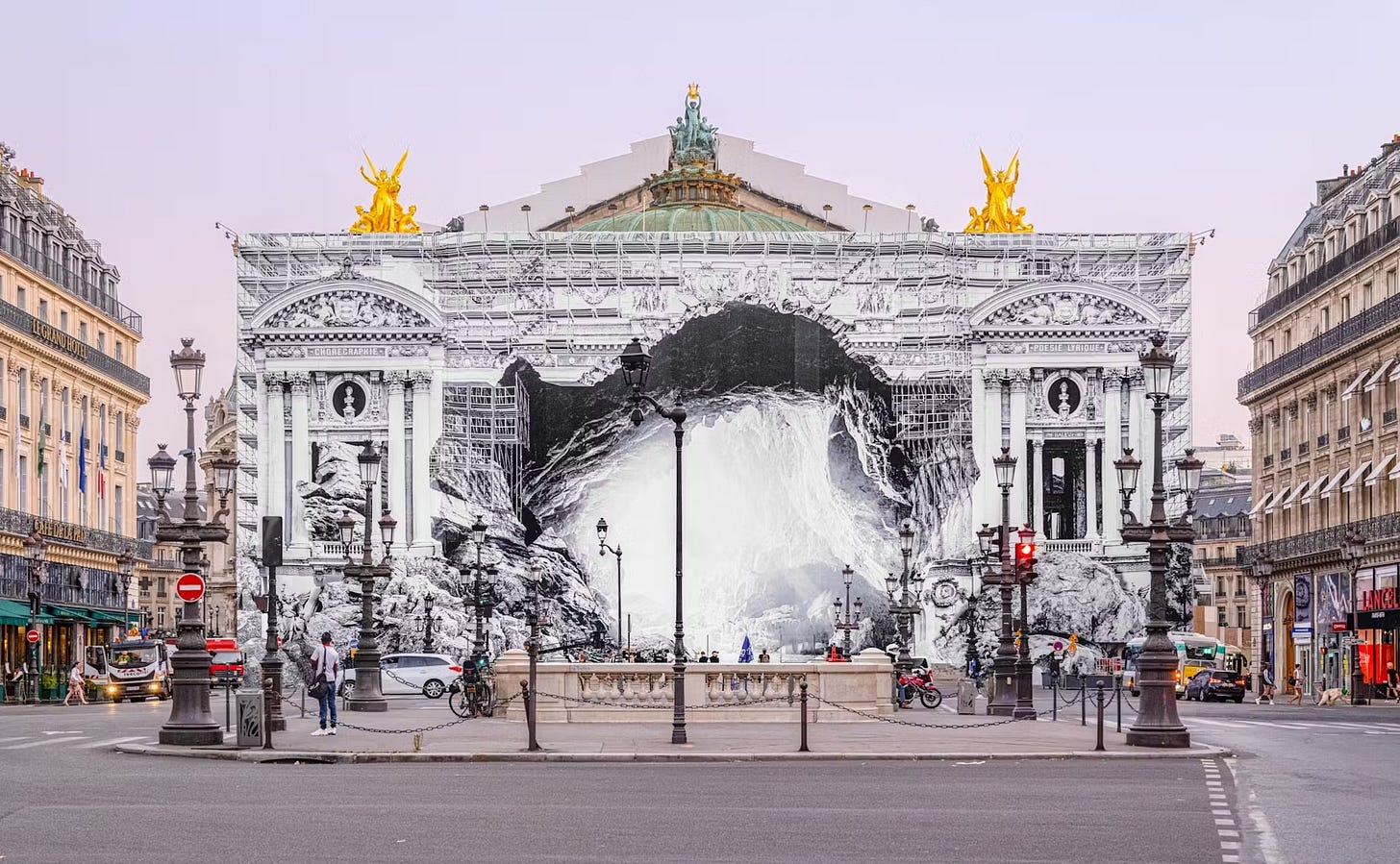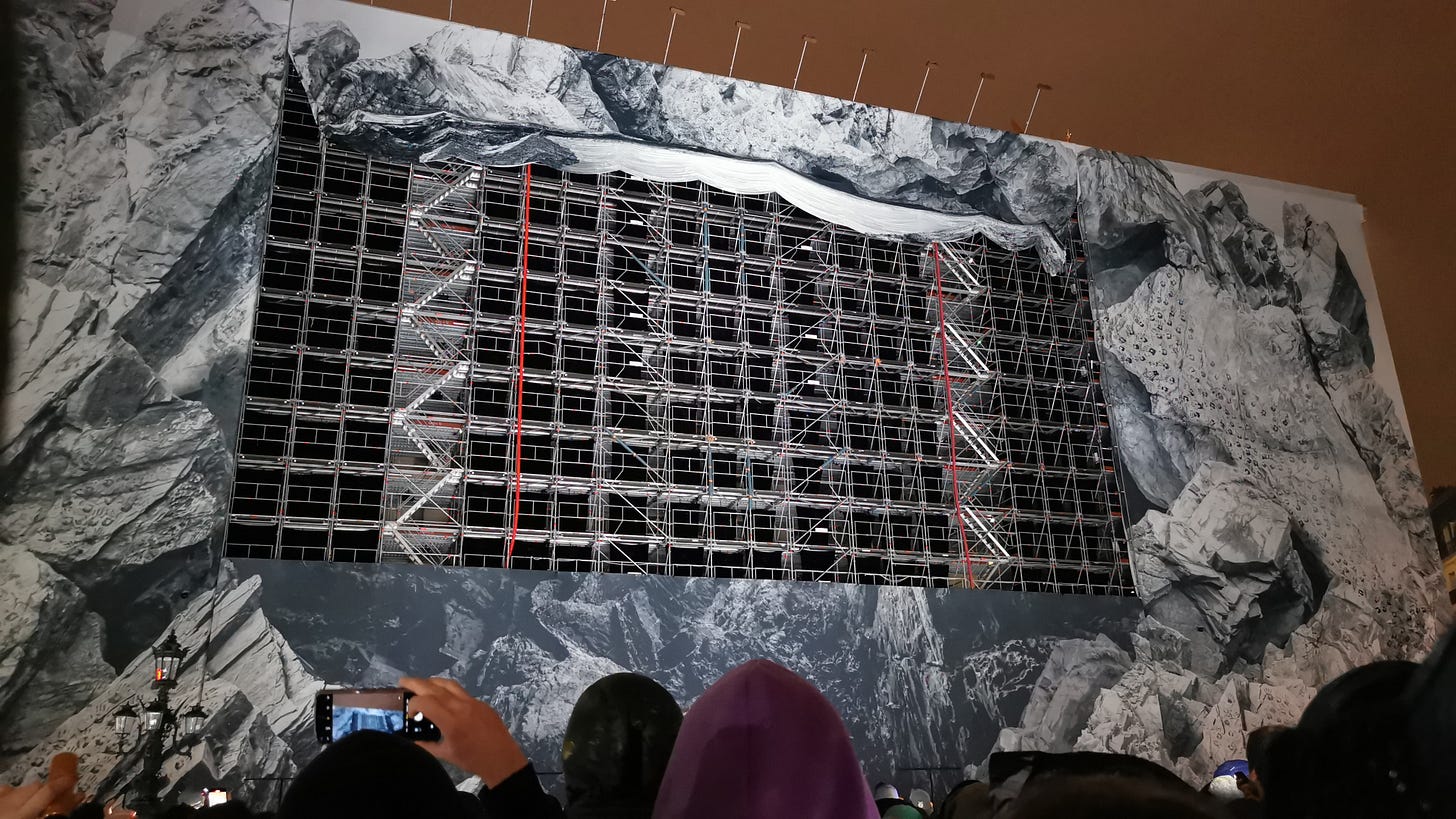A Night Outside The Opera
As the Paris Opera - Palais Garnier undergoes a massive renovation, three artists used the scaffolding to produce ambitious public performance art.
I have developed a (probably unhealthy) obsession with the advertisements that are wrapped around buildings in Paris undergoing major renovations. At some point in the near future, I’m going to write more about this strange brew of commerce, art, and preservation and share some of my favorites.
In the meantime, a group of artists not only apparently shares my fascination but took it to another level by transforming the façade of the Paris Opera - Palais Garnier to produce “Chiroptéra”, a ballet created by choreographer Damien Jalet with music by Thomas Bengalter (one half of Daft Punk), and a fresco created by enigmatic street artist JR.
Normally, the plaza side of Palais Garnier looks like this:
Starting in October 2022, workers began erecting scaffolding as the first step of a €7.2 million restoration project. The exterior needed a thorough cleaning to remove the soot caused by Paris’ severe pollution, plus the wear and tear from weather that had weakened some elements of the structure. The work is expected to be completed by the end of 2024.
In the meantime, Opera officials invited JR to create a public work to temporarily cover the scaffolding. Back in September, he revealed a giant fresco that he called “Acte I – L’entrée de la caverne” (The Entrance of the Cave) which was displayed for 3 weeks:
This month, JR unveiled Part II: Retour à la Caverne (Return to the Cave). To mark the debut, dancers performed the ballet "Chiroptera" by Jalet and Bangalter. Despite the drizzle and cold, I managed to elbow my way into the audience to watch the 20-minute spectacle.
Speaking before the show, JR addressed the crowd to explain the theme:
“It's about light and darkness,” he said. "In September, we invited you to come out of the cave and explore. This time, we invite you to enter the cave. So why light and dark? It speaks to us so much now because over the last few weeks we've had so much darkness around us that our public artists, the dancers, we paused for a moment, saying to ourselves ‘What's the point in dancing? What's the point of creating? What's the point of putting up a work when in a month's time we'll be seeing everything that's going on in the world?’ And we said, ‘Now, our role is to always bring people to the light, always move towards the light.’ You don't chase darkness with darkness. You drive out darkness with an infinite number of lights. And tonight, we're all here together to enter the cavern.”
The ballet began with a solo dance by Amandine Albisson, one of the Opera’s most renowned ballerinas, dressed in black. A bright light projected her shadow onto the fresco.


The middle section of the fresco then rose to reveal 153 dancers standing across the scaffolding, wearing large capes that were black on one side and white on the other. They then began to twirl to the soundtrack that blended electronica and acoustic music. As they spun, they created different patterns, eventually spelling out the phrase: “Darkness holds the grace of the light.”
The performance at times was eerie, enchanting, vibrant, and uplifting. The crowd was hypnotized and then burst into loud cheers and applause when it was all done. It was a generous gift, and certainly a most welcome one that, at least for a brief moment, created a sense of unity among those who were on hand to witness it.
Chris O’Brien
Le Pecq










A wonderful use of low-tech (or should I say analog) theatrical devices and real dancers to create an exciting visual spectacle. Thanks for sharing. I, too, would love to read your take on the convergence of contemporary art and the Parisian building wraps.
I loved this. Thank you for writing on this performance, and I look forward to your "investigative" piece on your own fascination with the act of commercial building wrapping in Paris!